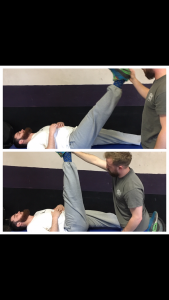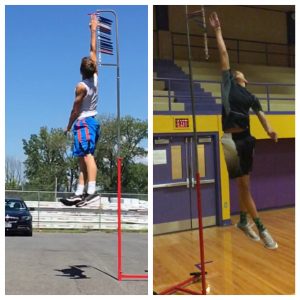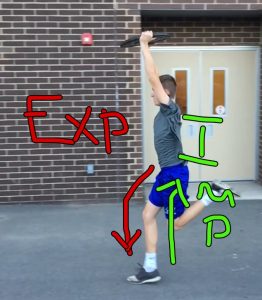So you want to jump higher?
Who doesn’t? Team sports reward players that can get up a couple more inches than their opponents. Rebounds in hoop, headers in soccer, even robbing homers in baseball, all come easier if you have some prolific “bunnies.”
Goalies need hops too
I’ve been fortunate to work with some vertically gifted athletes through the years. Touch the top of the square, sub 6′ and dunking, kangaroo-esque type of kids. I got to thinking, what makes these athletes springier than their gravity challenged peers?
Is there some magic bean or secret program that allowed them to soar like Icarus through the heavens? Well, don’t hold your breath, because there isn’t. But, there are some athletic qualities and considerations that I think jumping athletes should be aware of, and if improved can have even the most ground bound baller jumping better.
In no particular order I have listed several qualities that I think can help add inches to anyone’s bounce.
Being Lean
This is a huge metric in the NBA combine and for good reason. Lean muscle tissue can contract and produce force and generate movement. Adipose (fat) tissue cannot. There are exceptions to the rule, but it’s rare to see someone with over 20 percent body fat flying around like a snow leopard.

Snow leopards…lean and bouncy
I think most would agree that we need our brain, internal organs, and bones to live. So yeah, we HAVE to carry that weight. But the extra fat we carry around might not help us from a performance perspective.
Activate and Use Zone 1 (diaphragm, psoas, glute)
This feature is still fairly new to me, but has totally changed my world and views on performance. Think of it as getting your body to fire on all cylinders. Now you might have a V-8 engine and are a pretty solid athlete without even giving pause to think about this stuff. But, what if your body was only firing on 5 or 6 valves? You’d be missing out on some serious horsepower, no?
The activation or wake up drills I’ve learned can help you harness your full potential. If you can begin to fire out from zone one, a host of other qualities improve. People I have activated zone one on claim to be sleeping better, experience less pain, feel “bouncier,” balanced and lighter on their feet.

Zone one activated
I myself have never been a tremendous jumper, probably slightly above average through my playing days. I’m 6’6″ so dunking wasn’t too big of an issue. As I began strength and athletic training in college I found myself jumping slightly higher, but wasn’t pulling off any Vince Carter type of dunks.
As I got into my thirties I reached a point where I was like, “I’m not sure I can still dunk 😂.” I resigned myself to saying, “those days are done.” Right or wrong, when you hit that 3-0 milestone athleticism tends to fade at a pretty rapid rate. After I learned the activation drills I feel “twitchy” again. My knees don’t hurt and I feel like I’m driving out from my hips the way you’re supposed to. It’s like I’m in college again.
At 35 I even dunked with two hands in khakis and dress shoes the other day. Crazy stuff! If I had only known about activating zone one when I was playing. I can’t go back and do it all over, but I can teach it to today’s athletes and have them learn and apply it at an earlier age.
Positional Isometric Strength
Most people would agree that you need to be relatively strong to jump well. You can’t shoot a cannon ball out of a canoe. So we squat, dead lift, lunge, and do all those great exercises in hopes of getting better at jumping and running. And it works… to a degree.
I’ve written before about the SAID principle and how important it is in attacking specific physical qualities. It works here too. Positional isometric strength simply means in this instance getting stronger in the position you jump out of. It’s not a full squat. It’s not even a half squat. In many cases, it’s a quarter or eighth of a squat. I know many dogmatic gym fiends that would find that concept akin to spitting on a picture of Arnold, but in order to get better out of that jumping position let’s strengthen that jumping position!
I want an athlete that when he descends down to jump and hits that isometric contraction at the bottom loses no energy at moment of takeoff, and just flies out of the hole towards the heavens. Watch any great jumper and you will see that when they rip down towards the ground they look like a rock in that bottom position. No energy is wasted.
Think of it this way- what bounces higher? A deflated or an inflated ball? An inflated ball is more stable and rigid when it hits the ground, and therefore bounces higher. More strength and stability at the bottom of your jump equals a higher bounce!
Triple Flexion
People in the strength and conditioning field always seem to be talking about triple extension of the ankles, knees, and hips. It’s the “show” portion of most athletic movements. Jumping up, jumping out, and sprinting powerfully all owe their “wow” factor to a forceful contraction of those extensor muscles.
For good reason too! Powerful glutes, hamstrings, and calves are critical to explosive athletic movements. But folks often times overlook the “load” portion of the load and explode- the triple flexion. The faster and more dynamic the ankles, knees, and hips can bend, the more forceful the triple extension can be. It’s the reason a counter movement jump will always test better than a jump without a counter movement.
Think of that inflated ball we were talking about earlier. If you just casually drop it, the height of the bounce off of the floor will be pedestrian. But if you really chuck it at the ground, it will soar towards the sky. The same thing works for jumping athletes. The more aggressively you approach the jump, the greater potential there is to explode up off of the ground.

Aggressive triple flexion creates dynamic triple extension
Extensive to Intensive Jumps
Introduce your jumping program slowly. Don’t put the cart before the horse. Many folks will try to throw depth jumps in day one because they are considered to be the magic jumping exercise. I think depth jumps are great, but I’d say wait until you have built up a solid foundation of jumping ability before adding depth jumps into the arsenal.
How long do you wait? It depends, but rule of thumb is when plateaus are hit then change the stimulus. Extensive jumps are usually lower in intensity and done for multiple reps. Intensive jumps on the other hand are usually lower rep and more forceful in nature. Intensive jumps are “shock jumps” if you will. Transitioning from extensive to intensive jumps will adequately prepare the body for the increased stress, avoiding injury and jumping higher in the process.

Above the square is a great marker for any hooper
While this list isn’t exhaustive, hopefully it can give you or your young athlete a better understanding of things to consider in your attempts to jump higher.






